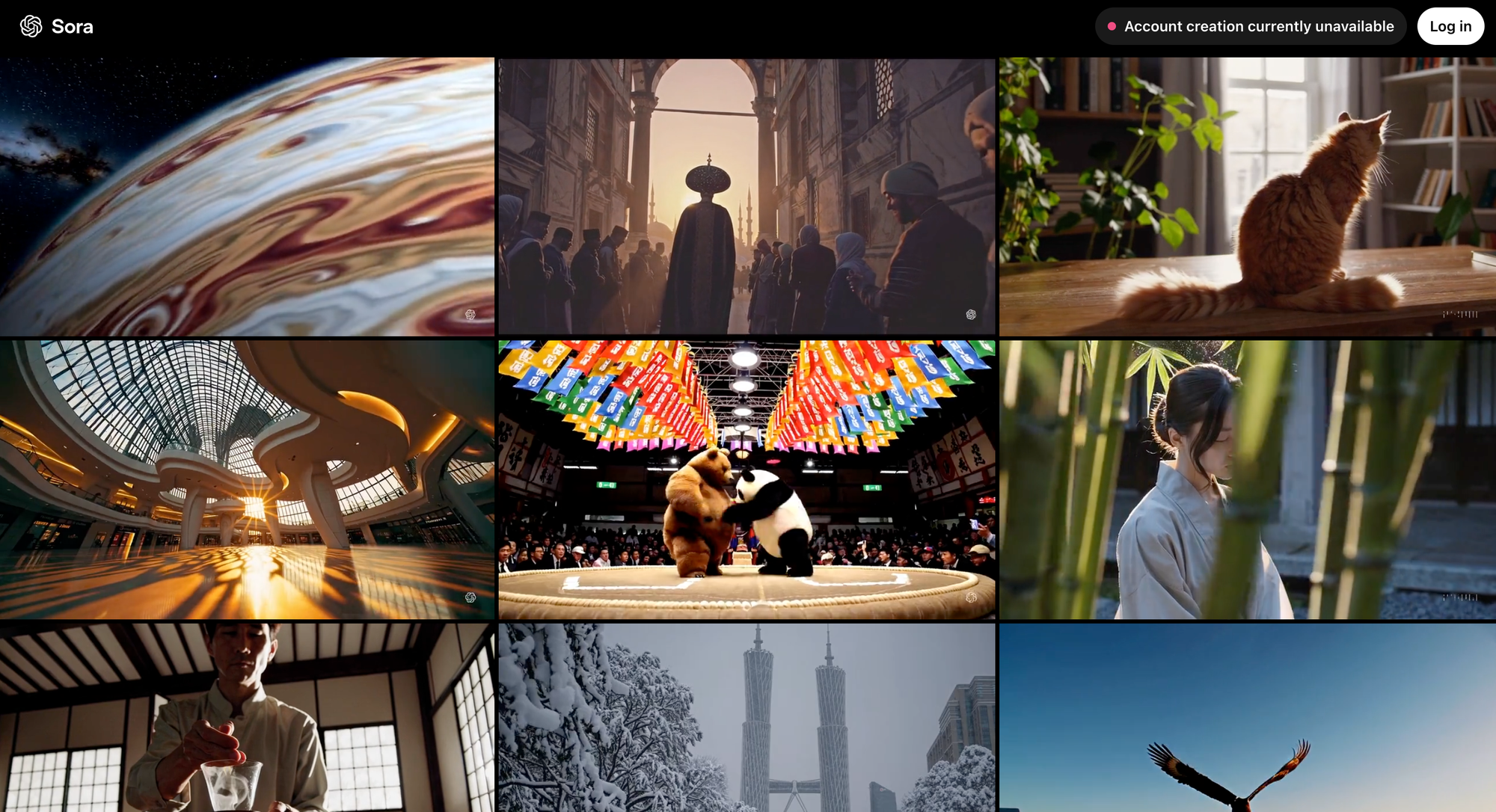OpenAI finally launches Sora, its powerful AI Video generator

After months of delays and whispers in the industry, OpenAI has finally lifted the curtain on Sora, its AI-powered video-generation model.
First teased back in February, Sora seemed stuck in development limbo while competitors like Runway’s Gen-3 and Meta’s MovieGen raced ahead to market. But on Monday, OpenAI made it official during its “12 Days of OpenAI” livestream, presenting a polished version of the model they’re calling Sora Turbo.
According to the company, Sora Turbo is a new and improved version of the model previewed earlier this year, offering faster performance and enhanced features. Users can generate videos from text prompts or uploaded images, blend scenes, and even “remix” existing videos by tweaking specific details.

It also comes with a storyboard feature, which allows creators to string prompts together into seamless scenes, and blending tools to merge different ideas.
“This is a critical part of our AGI roadmap,” OpenAI CEO Sam Altman declared during the announcement livestream.
Safety is also a priority. Sora’s outputs come with visible watermarks and embedded metadata to ensure traceability, and the platform says it will strictly prohibit the generation of copyrighted content, depictions of minors, and explicit material. The company says it’s also taking extra precautions to block misuse, including the creation of deepfakes or harmful content.
While Sora is exciting, it’s not without its quirks. Reports from early testers note that creating a high-quality 1080p video takes a few minutes – even now when servers aren’t overloaded. And while it’s faster than the version previewed earlier this year, the model struggles with certain technical details—like generating realistic leg movements or handling long, complex actions, synonymous with many AI tools on the market today.
Interestingly, unlike most of OpenAI’s products, Sora isn’t part of ChatGPT itself or built on GPT-4. Instead, it lives on a separate platform, Sora.com, specifically designed for video creation. This approach raises eyebrows, considering that integrating Sora with ChatGPT could offer a more streamlined experience and drive higher user adoption. ChatGPT currently boasts up to 11 million subscribers and over 3.75 billion visits, making the choice to keep Sora separate a curious one. Still, it’s likely a calculated move by OpenAI.

To try Sora, you’ll need a subscription. A $20-per-month ChatGPT Plus plan lets you generate up to 50 videos, each up to 720p, while the $200 Pro plan—which launched as part of its “12 Days of OpenAI”—offers unlimited access, resolutions up to 1080p, and watermark-free downloads. Pro users can also make up to five videos simultaneously, saving time for creators juggling multiple ideas.
While OpenAI’s late arrival to the AI video scene may put it at a disadvantage, Sora’s potential is undeniable. Its ability to animate, edit, and remix with just a few prompts could transform how videos are made, lowering barriers for creators and opening up new possibilities for storytelling.
For now, the tool is currently available to users in the U.S. and most other countries. OpenAI, however, promises a global rollout in the coming months.
